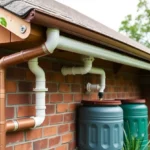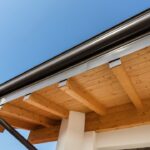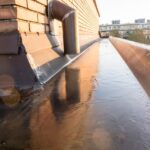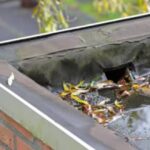Metal roofs have gained popularity over the years for their durability and modern appeal. However, like all roofing materials, they come with their own set of challenges. Understanding the disadvantages of a metal roof is crucial before deciding if it’s the right fit for your home.

Introduction to Metal Roofing
Metal roofs are hailed for their longevity and ability to withstand harsh weather conditions. Despite their advantages, it’s important to weigh them against the potential downsides to ensure you make an informed decision about your roofing.
Initial High Cost
The upfront cost of installing a metal roof is significantly higher than traditional shingle roofs. Homeowners need to consider whether the long-term benefits justify the initial investment.
Noise Levels
During heavy rain or hail, metal roofs can become very noisy. This can be a significant disadvantage, especially for those who are sensitive to sound or live in areas with frequent storms.
Noise Mitigation Options
Fortunately, there are ways to reduce noise levels with proper insulation and underlayment options, which can help to dampen sound.
Expansion and Contraction
Bearing in mind that metal expands and contracts with temperature changes, installation must allow for this movement. Failure to do so could lead to issues like warped panels or loose screws.
Installation Considerations
Professional installation by experienced contractors is crucial. A detailed contractor guide can ensure proper precautions are in place.
Potential for Dents
Despite their sturdy nature, metal roofs can dent under heavy impacts, such as large hail or falling branches. This can affect the aesthetic appeal of your roof.
Color Match Inconsistencies
Over time, color matching can become an issue if repairs are needed, as new panels may not perfectly match the original color due to fading.
Less Energy Efficiency in Extreme Temperatures
While metal roofs reflect heat, which helps in hotter climates, they can be less effective in extremely cold areas without proper insulation.
Insulation Strategies
To combat this, additional thermal insulation can be added to improve energy efficiency.
Limited Color Choices
Compared to traditional asphalt shingles, metal roofing offers fewer color choices, potentially limiting aesthetic options for homeowners.
Repairs Can Be Costly
Repairing a metal roof can be more involved and expensive than repairing other types of roofing, due to the need for specialized tools and techniques.
Fastener Deterioration
Exposed fasteners can deteriorate over time, leading to potential leaks if not properly maintained or replaced.
Maintenance Tips
Regular maintenance checks can help identify and replace deteriorating fasteners before they lead to serious issues.
Some Metals are Prone to Rust
Without proper coating and treatment, certain metals like steel can rust when exposed to moisture over time.
Installation Requires Skilled Labor
The installation process for metal roofs is complex and requires skilled labor, which can add to the overall cost and timeline.
Choosing the Right Contractor
For homeowners interested in installing a metal roof, finding the right contractor is key. Refer to our guide to choosing a contractor for assistance.
Environmental Concerns
Some metal roofing materials may not be environmentally friendly, especially if they are not recyclable, leading to potential landfill waste.
Conclusion
While metal roofs offer several benefits, they also come with a set of challenges that need careful consideration. By understanding these disadvantages, homeowners can make a more informed decision that best meets their needs.

Frequently Asked Questions
Are metal roofs noisy in the rain?
Yes, metal roofs can be noisy during rainstorms, but proper insulation can help reduce the noise levels significantly.
Do metal roofs attract lightning?
No, metal roofs do not attract lightning more than other roofing materials. They are also non-combustible, offering safety during storms.
How long do metal roofs last?
Typically, metal roofs can last between 40 to 70 years, depending on the material and installation quality.
This article contains affiliate links. We may earn a commission at no extra cost to you.








